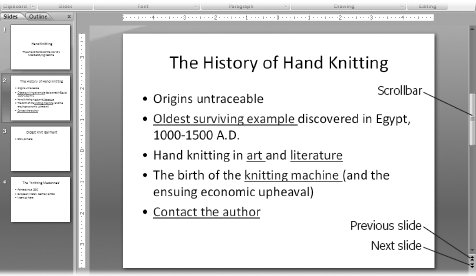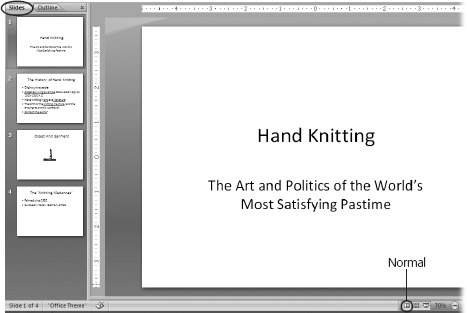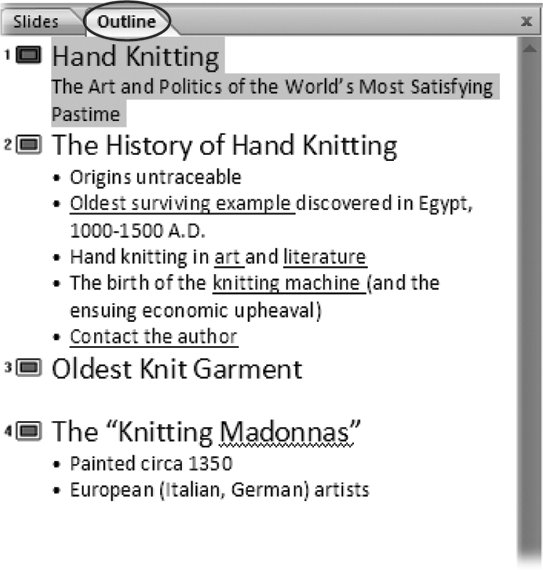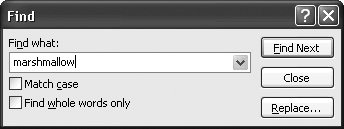Section 1.5. Moving Around Inside a Presentation
1.5. Moving Around Inside a PresentationMoving around your presentation when you only have one slide isn't much of an issue. But once you start adding slides, you'll want a way to hop quickly from your first slide to your last. You'll also want to jump to specific slides in the middle of your presentation; for example, to tweak a particular slide's layout, to add content, or to delete it. PowerPoint gives you several ways to flip through your presentation. This section acquaints you with the easiest and most useful options: using your workspace scroll bar, using the View pane on the left side of the screen, and using the Home ribbon's Find function. 1.5.1. Navigating with the Scroll BarIn PowerPoint, you see a scroll bar on the right side of your workspace similar to the one in Figure 1-19.
To scroll through your presentation, all you need to do is click the scroll bar and drag up (to scroll toward the beginning of your presentation) or down (to scroll toward the end). As you go, PowerPoint displays each slide in turn . Tip: To flip forward (or back) through your presentation one slide at a time, click the Next Slide (or Previous Slide) arrow shown in Figure 1-19. 1.5.2. Navigating with the Slides and Outline TabsSlides and Outline tabs are not views (they both appear in Normal view) but are tabs that let you see slide thumbnails or an outline of your slideshow, respectively, in the Slides (Figure 1-20) or Outline (Figure 1-21) pane.
PowerPoint assumes you want to use Slides view until you tell it otherwise . To change views, click the Outline tab shown in Figure 1-21. To switch back to Slides view, click the Slides tab (Figure 1-20). Note: If you don't see the View pane at all, select View  Normal (or click the Normal icon shown in Figure 1-20) to display it. Normal (or click the Normal icon shown in Figure 1-20) to display it. Note: The View ribbon offers you a bunch of additional ways to view your presentation, including Slide Sorter (Chapter 5) and Notes Page (page 43). 1.5.3. Using FindWhen you've got a lot of slides and you're looking for one containing a specific word or phrase, you'll want to bypass Views in favor of the Find function. Similar to the Find feature in other Windows programs, PowerPoint's Find function lets you search for specific words quickly and easily. Here's how to use it.
|



